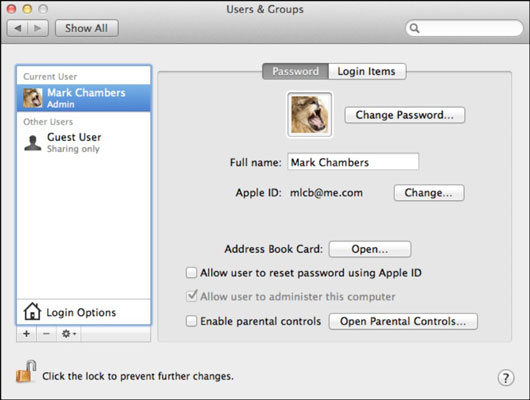
- Change your password for your mac air how to#
- Change your password for your mac air password#
- Change your password for your mac air mac#
This process may seem easy enough, except that the utility for creating the keyfile is kept at Apple so you have to go through an authorized service center, which will contact technicians at Apple for this service.
Change your password for your mac air password#
The system will read the file and properly reset the firmware password stored in the Atmel chip. Place the file on a special USB boot drive and hold Option to load the boot menu and select this drive. Submit the hash to Apple, where someone will put it through a special utility to create a keyfile that is specific for your machine. In this hash, the first 17 digits are an identifier for the system's motherboard, and the last 16 digits are a hash for the password. Press Control-Option-Command-Shift-S to reveal a 33-digit hash (mixed letters and numbers) that contains an identifier for your specific motherboard and the Atmel chip used for your system.
Change your password for your mac air how to#
If you enjoyed this article, you might also like this TechJunkie tutorial: How to Edit the Hosts File on macOS (Mac OS X).ĭo you have any tips or tricks with regard to putting your MacBook to Sleep or locking your MacBook’s screen? If so, please tell us about it in a comment below.To reset the firmware password on newer Macs, you must now follow these steps:īoot with Option key held to display the boot menu's firmware password prompt.
Change your password for your mac air mac#
Regardless, having a strong user account password and taking a moment to ensure that your Mac is locked even if you only step away for a few seconds are both crucial steps to protecting your data. Of course, it’s not a good idea to leave your Mac in a public place but realistically you might go get a coffee refill leaving your Mac at your table. It’s at least some peace of mind to know that your data will be protected from opportunistic thieves that might grab your Mac.

It’s also likely that users, especially those “on the go” with MacBooks, will find occasion to use both options more frequently than those who mostly use their Macs at home.Road warriors are more likely to need to save battery life and be more concerned about their Macbook being lost or stolen. We at TechJunkie recommend that Mac users experiment with both options to find the one that suits them best for different situations. On the other hand, putting your Mac to sleep will stop all background tasks as it puts the CPU to sleep, so it may not be the ideal option for users who want their Macs to keep working while they grab a coffee or stop for a bathroom break.Īlso, it takes longer to wake up from a sleep state than from a display lock state, although on modern Macs with fast SSD storage the time difference between the two sleep options has shrunk considerably. It’s probably not a good idea to set the time interval to re-enter the password to 8 or even 4 hours as laptops can fall into the wrong hands. Those who travel with their Macbook or use it in a public space might want to set the time interval to immediately, while those who only use their laptop at home might set it to longer. If you want the highest level of security, set it to “immediately” all the way up to the lowest level of security, which is 8 hours. From the Require Password pulldown menu select the amount of time you want the elapse “after sleep or screen saver begins” to require a password from these choices: immediately, 5 seconds, 1 minute, 5 minutes, 15 minutes, 1 hour, 4 hours, or 8 hours.


:max_bytes(150000):strip_icc()/B1-SetUpMicrosoftTeamsforMac-annotated-3020d1c9e4524a55b1751f60651a11ba.jpg)
Of course, sometimes laptops get stolen from coffee shops, offices, and homes, and a locked MacBook at least provides some protection of your date.īefore doing anything else, set your “Require Password” system preferences… Configure Your System Preferences


 0 kommentar(er)
0 kommentar(er)
